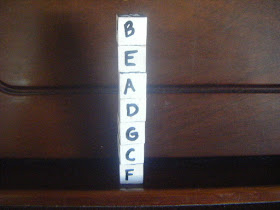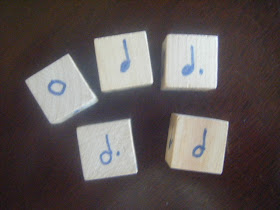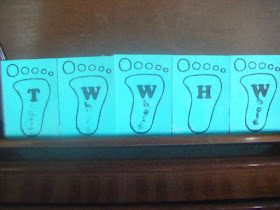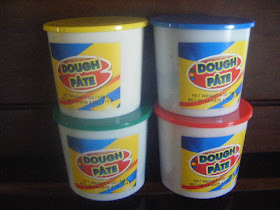Despite a lot of repetition and various analogies, some students still struggle to play with proper hand position - curved fingers, thumb on side tip in slide position. As I was reviewing this concept with one of my sons this week a wrestling analogy finally helped it sink in for him. He loves wrestling a whole lot more for him so this explanation really struck a chord for him!
1-Wrestling is a sport that requires quick thinking, strength and properly executed moves. Piano involves finger strength, and proper positions as well.
2- Before wrestling its good to do some practice workouts. In piano you can "work out" your fingers by forming finger doughnuts and checking for rounded (not collapsed) knuckles.
3- If you ever get caught flat on the mat... you know you're likely to get pinned unless you can quickly turn and "build your base" (get on your hands and knees and arch or curve your back). In piano flat fingers are a sign of trouble too. Imagine that your thumb is like your coach or referee. Its okay for him to get low on the mat to "check" to see if your other fingers (imaginary wrestlers) are building their base (curved and on tips).
Pages
▼
Wednesday, May 16, 2012
Wednesday, May 2, 2012
More Musical Minute to Win it Ideas
Music Minute to Win It Games
I was excited to find this great game idea posted by Sheryl at Notable Music Studio blog just in time for my next group lessons. I came up with a few other musical variations of "Minute to Win It" and started adding them in the comments on her blog... but after the list started getting a bit lengthy I decided to post them here too for future reference.
Sheryl's ideas of "A Word Please," "Composer ABC's", and "Drop Off" were a great hit at our last group lesson too.
Sharp Stacking
Stack scale blocks in the order of
sharps on the piano bench. Then
transfer the stack to the top of piano without dropping any blocks.
(For Early Elementary students you could have them stack the
blocks in skipping alphabet order instead)


My version of A Bit Dicey
Roll 4 Rhythm
Dice until you can create a rhythm that adds up to 1 measure in 4/4 time.
(similar to Yahtzee). You may roll as
many times as you want within the minute.


A Corny Puzzle
Match up the correct letter names, staff and keyboard notes together on the
keyboard puzzle sheet (free printable at D'Net Layton's blog)


A Twist on Terminology twist:
Find your Relative.
Match up scale blocks or music alphabet letter cards with their relative
keys (C Major w/ a minor, etc.)
Stellar Sightreading
Sightread a line from Pianimation.com sightreading challenge sets with accurate rhythm and notes. If
you make a mistake you must move on to the next one.
Stepping up the Scales
Arrange the scale whole and half step feet cards (from Pianimation.com) in the correct order for a Major scale. Then play a major scale on the piano while singing the scale pattern (Tonic, whole, whole..., etc.)


Rhythm Sculpting
Using playdough, sculpt 4 different types of rests and arrange them in order from shortest to longest.


Blind Intervals
With a blindfold on play ?# of intervals on the piano correctly that your teacher calls out. (Teacher chooses a reasonable goal for student's abilities to complete in one minute.) You can vary the difficulty by calling out just a number (2, 3,4, 5 etc. for beginners) or calling the interval and quality for more advanced students (Major 6th, Perfect 4th, minor 3rd, etc.).Sheryl's ideas of "A Word Please," "Composer ABC's", and "Drop Off" were a great hit at our last group lesson too.
 |
| Composer ABC's |
 |
| Drop Off |



